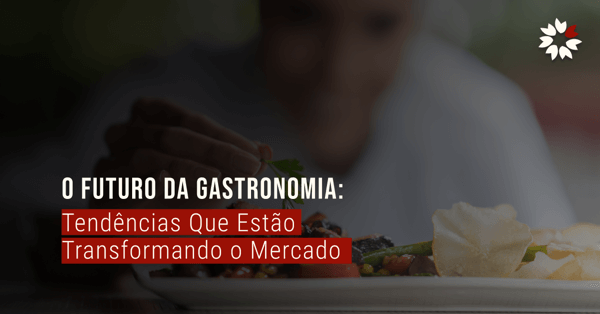O setor de gastronomia está em constante evolução, refletindo mudanças nas preferências dos consumidores, inovações tecnológicas e questões sociais e ambientais. Aqui estão algumas das principais tendências que estão moldando o mercado atualmente:
1. Sustentabilidade e Consumo Consciente:
– Os consumidores estão cada vez mais preocupados com a origem dos alimentos e o impacto ambiental de suas escolhas. Restaurantes que adotam práticas sustentáveis, como o uso de ingredientes orgânicos, locais e de temporada, e reduzem o desperdício são altamente valorizados. O desenvolvimento de cardápios que priorizam a sustentabilidade pode atrair um público mais consciente.
2. Menu Plant-Based:
– O aumento da conscientização sobre saúde e bem-estar resultou em uma demanda crescente por opções vegetais. Muitos restaurantes estão diversificando seus cardápios com pratos vegetarianos e veganos, não apenas para atender a esse público, mas também para oferecer alternativas mais saudáveis e sustentáveis.
3. Experiências Gastronômicas:
– Os consumidores buscam mais do que apenas uma refeição; eles desejam experiências memoráveis. Isso inclui jantares temáticos, interações com chefs, eventos gastronômicos e um ambiente que estimulam todos os sentidos. Oferecer uma experiência única, que envolva o cliente, pode aumentar a fidelização.
4. Tecnologia e Digitalização:
– A digitalização está transformando o segmento gastronômico. O uso de sistemas de gestão, aplicativos de delivery, cartões de menu digitais e plataformas de reserva online é cada vez mais comum. Odelivery, que cresceu significativamente, se consolidou como uma necessidade e os restaurantes que investem em uma boa presença digital são mais competitivos.
5. Saúde e Bem-estar:
– Com as mudanças nos hábitos alimentares, os consumidores estão em busca de opções que promovam saúde e bem-estar. Cardápios com opções de pratos saudáveis, como low carb, sem glúten e com ingredientes funcionais, estão em alta.
6. Gastronomia de Conforto:
– A busca por alimentos que proporcionam conforto emocional continua a ser uma tendência. Pratos tradicionais e caseiros estão em alta, pois muitos consumidores buscam reconforto em tempos de incerteza, fazendo com que as receitas familiares e clássicas retornem ao menu.
7. Delivery e Takeaway:
– Com o advento da pandemia, o serviço de delivery e takeaway ganhou um novo patamar de importância. Restaurantes que investirem na otimização desses serviços, com embalagens adequadas e a manutenção da qualidade dos pratos, terão uma vantagem competitiva.
8. Personalização e Customização:
– A personalização do pedido está se tornando uma expectativa para muitos consumidores. Oferecer opções que permitam ao cliente customizar suas refeições, desde a escolha dos ingredientes até a forma de preparo, enriquece a experiência e aumenta a satisfação.
Essas tendências demonstram que o setor de gastronomia é dinâmico e sensível às mudanças culturais e sociais. Restaurantes que se adaptam a essas novas demandas e se empenham em oferecer experiências diferenciadas têm mais chances de se destacar e prosperar em um mercado tão competitivo. Com uma abordagem proativa e inovadora, é possível não apenas atender às expectativas dos clientes, mas também antecipar-se às futuras mudanças do setor.




